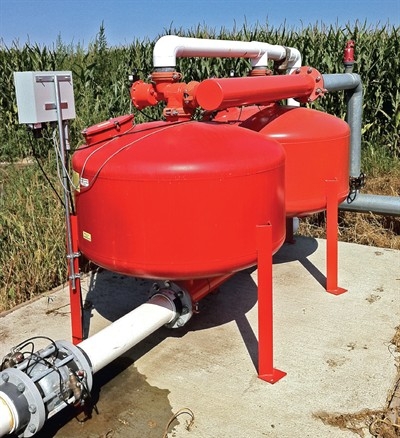Sand media filters are commonly used in agricultural microirrigation systems. They have the advantages of simplicity and large capacities and are favored by many farmers and designers over other filtration hardware when there is a lot of organic matter in the water. The Irrigation Training and Research Center (ITRC) at Cal Poly San Luis looked at sand filters to see if it were possible to use lower-than-accepted backflush pressure and thereby reduce the total pressure required for irrigation systems. By lowering backflush pressure it would be possible to design a system that could run at an overall lower pressure and hence cost. The various components of microirrigation systems run at lower pressures than the backflush pressures recommended for most sand media filters.
The conclusions are:
-
There are substantial pressure differences amongst different models and designs during backflush and filtration
-
The main pressure loss is at the backflush valves
-
If designed right large backflush flow rates can be accomplished at low backflush pressures (this is critical for proper detritus removal).
-
There are substantial differences among underdrains of various models which affects pressure requirements
-
No large intimal high pressure was necessary to break up the media bed, a common practice.
-
Different underdrain designs create different patterns of cleaning the media.
-
There were substantial differences among models in the amount of sand discharged from the system at backflow rate of 190 GPM. Sand discharge should actually be avoided since it's an indication of preferential flow and poor cleaning.
These are some new ideas, and even though they are meant to reduce pressure and energy use, they are also good management suggestions.
If this strikes your fancy, read more at http://www.itrc.org/reports/mediafilters.htm
Attached Images:
